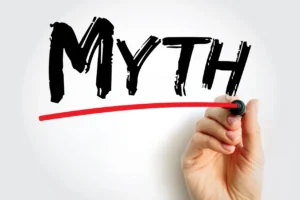What Does a Credit Report Show?
 Credit Reports Are More Than Just a Credit Score
Credit Reports Are More Than Just a Credit Score
As a landlord, you understand the importance of running a rental background check on your prospective tenants. Like many people, you may feel that the most important indication of a person’s credit worthiness is the credit score.
But the credit score is based on an arcane formula that is merely a snapshot of a person’s financial habits. The only way to really understand your applicant’s credit habits is through their full credit report.
And once you have the credit report, do you know how to get the most information from it? The typical credit report has several information-packed sections that can give you a clear picture of the applicant’s spending habits and how they handle their financial obligations.
If you have co-applicants for a property, it is highly recommended that you pull a credit report for each of them, even a married couple. It is not unusual for one member to have exemplary credit while the other has been in collection many times.
A truly comprehensive landlord background check that includes the searches described below will yield you the information that will supplement the credit report and assist you in deciding who is the right tenant for your property.
Personal Data
This section contains the personal information that the credit bureau has on file, including the applicant’s full name, any aliases, current and past addresses and phone numbers, birthdate, Social Security Number, and on some occasions, employment data. This information does not have any bearing on the person’s credit score but is for identification only.
Credit Summary
The information in this section is an overview of the more detailed reports in the Public Records and Account Information section below. It shows totals in several categories, such as the number of inquiries made, total trades, total high credit, total credit limit, total mortgage amount and total revolving amount. It contains the total installment amount, total account balance, total monthly payment and percentage of available credit. Additional information includes negative trades, amount past due, previous past due accounts, collections, public records, and 30, 60 and 90 or more days past due.
Collections
If the applicant has been put in collection during the past seven years, it will appear here. Credit card accounts and accounts with banks, retailers, utility companies, such as cable or mobile phone providers, and past due medical bills can all be turned over to a collection agency. The report will show the original balance of each account, the amount due and the date reported along with the current status of the account.
Public Records and Account Information
Public records include the specific payment history as reported by the applicant’s lenders and creditors, including types of accounts, the date those accounts were opened, the credit limit or loan amount and current balances and status. These accounts may include car or student loans, mortgages or lines of credit. Creditors report this data monthly but it might not show up on a credit report for another month or two. Late payments remain on a credit report for seven years.
A summary of each tradeline’s data will include the type of account, the date opened, the credit limit or loan amount, utilization of credit and current balances. The payment history is shown in a series of colored blocks laid out in chronological order. Each block contains the payment status for each month the account has been open. “N/R” means that month was not reported. “UNK” is for unknown; the creditor may not have reported that month or the account may not have been used at that time. The green box or circle says “OK” which indicates that the account was paid that month as agreed. A block with a number, such as 30 or 90, etc., shows how many days late the account was. “COL” in a black box is used when an account has been turned over for collection.
Regular Inquiries
When someone runs a credit report for the purpose of approving an application for credit, it will appear in this section along with the date, contact information and the name of the company making the inquiry. These inquiries are often referred to as “hard pulls.” They do affect the credit score a very small amount for about a year and will be removed from the report after two years.
While the credit report is an indicator of how the applicant handles their financial obligations, it is equally as important that you combine it with the other information available through AAOA tenant background checks. You’ll also want to know if the applicant has been evicted, arrested or passed bad checks. The sex offender and terrorist screenings are very important as is the Federal Search, which covers major crimes.
Armed with such complete information, you can assess each rental application feeling confident that you are selecting the right tenant for your rental.













 Accessibility
Accessibility